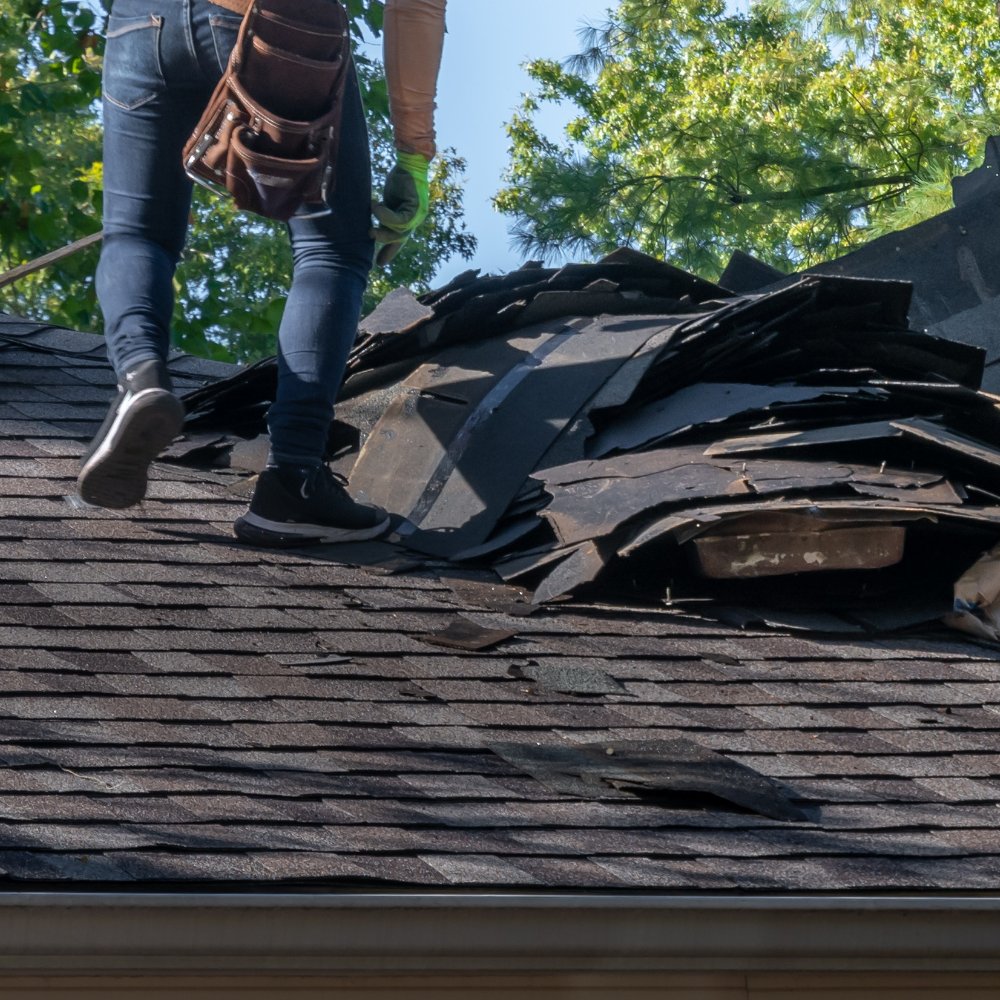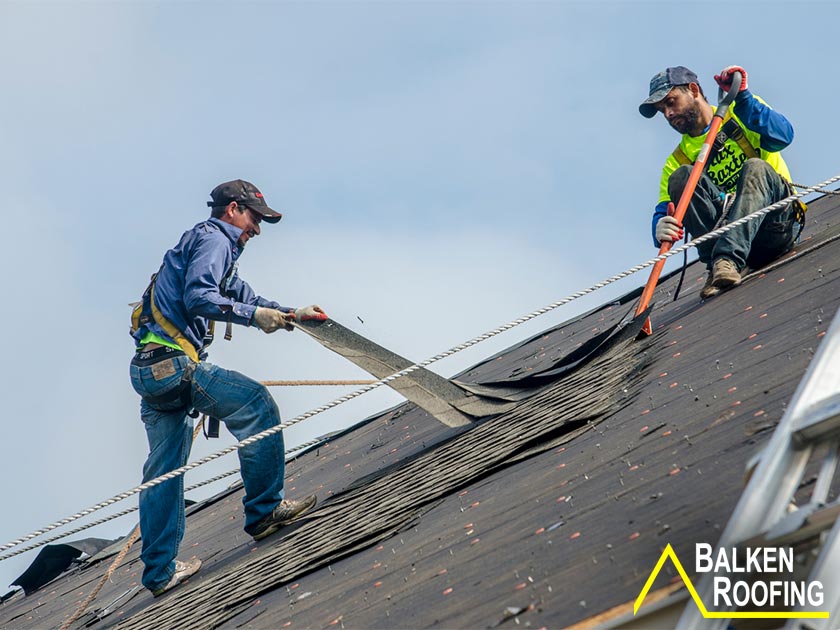Preventative Roofing Maintenance: Tips to Prevent Pricey Fixings
To avoid costly fixings, you must evaluate your roofing system regularly for missing out on or damaged shingles, tidy your downspouts and rain gutters to avoid blockages, and trim overhanging branches. These easy steps can greatly expand your roof covering's life-span, and there's plenty a lot more you can do to secure your financial investment.
Check Your Roofing System Consistently
When you check your roof regularly, you can catch potential problems before they end up being costly repair services. Begin by checking for missing out on, fractured, or crinkling roof shingles; these are indicators that your roof may require focus. Look for any noticeable wear around smokeshafts, vents, and blinking, as these areas are usually prone to leaks. Take note of any kind of sagging or uneven areas, which might show structural concerns.
After a tornado, it's important to assess your roofing for damage brought on by high winds or hefty debris. Don't fail to remember to examine the bottom of your roofing in the attic room; look for indicators of moisture or mold, which can suggest leaks. You need to likewise watch out for granules in your seamless gutters, as they can signify shingle deterioration. By taking these steps, you'll prolong your roofing system's lifespan and conserve on your own from unforeseen costs. Regular evaluations are key to preserving a healthy roofing system.
Tidy Rain Gutters and Downspouts
Routine roof inspections normally result in a vital task: cleansing your downspouts and rain gutters. Stopped up gutters can create water to support, resulting in possible roofing leakages and structural damages. To avoid these issues, make it a behavior to inspect your rain gutters at the very least two times a year, especially after heavy storms or drop when leaves collect.
Do not neglect to check downspouts for clogs. If water isn't flowing easily, you could require to utilize a plumber's snake or a tube to remove the obstruction.
Address Overhanging Branches
Overhanging branches can present a serious danger to your roof, so it is very important to cut them regularly. Not only can they cause damages throughout tornados, however they can additionally invite parasites. Make it a behavior to check for any kind of signs of wear or damages to keep your roof in leading shape.
Trim Consistently
One of the most crucial action in roofing maintenance is to cut those branches that hang as well close to your home. Looming branches can create significant concerns, from particles buildup to prospective damages during tornados. Consistently cutting down these branches maintains your roof covering clear and decreases the threat of leaks and bugs. Make specific to assess the wellness of the trees around your home; weak or dead branches present an also higher danger. Aim to trim branches at the very least 6 feet away from your roofline, ensuring they will not enter into contact with your shingles. You do not need to tackle this task alone; employing a professional arborist can assure effective and safe cutting, protecting your roof and improving your home's general look.
Check for Damages
 roof repair
roof repair
Look for Harmed or Missing Shingles
It's necessary to check your shingles frequently for any kind of damages or missing out on pieces. Replace missing shingles promptly to stop additional troubles if you find any type of problems. Likewise, keep an eye on exactly how the weather affects your roof covering, as severe conditions can bring about use and tear.
Examine Regularly for Damage
Regularly checking your roof for damages is important to maintaining its stability and prolonging its lifespan. Check your roof covering after hefty storms or strong winds, as these problems can displace or damage shingles. By making roofing system examinations a routine part of your maintenance regimen, you can capture problems early and conserve on your own from costly repair work down the line.
Replace Missing Out On Roofing Shingles Promptly
After checking for any kind of damage during your assessments, you might find that some shingles are missing or endangered. Don't wait to change them; timely activity can protect against more problems. Missing roof shingles reveal your roof covering to dampness, which can cause leakages and even more substantial damages over time.
Make certain to use tiles that match your roof's shade and design for a seamless appearance. Maintaining your roof in top shape is vital for safeguarding your home and avoiding pricey repair services down the line.
Screen Weather Impact Often
As storms roll through your area, keeping a close eye on your roof becomes necessary. After each storm, take a moment to evaluate your roofing for any type of damaged read further or missing roof shingles. Climbing onto the roofing isn't always needed; you can usually detect problems from the ground with field glasses.
 roof repair
roof repairEnsure Appropriate Air Flow
While many house owners concentrate on the exterior and architectural facets of their roofing systems, assuring correct air flow is vital for preserving its durability and efficiency. Poor ventilation can result in warm buildup and wetness accumulation, which can trigger damage in time. Make certain your attic has enough airflow by mounting soffit vents and ridge vents. This setup enables a continuous circulation of fresh air, helping to regulate temperature level and reduce humidity degrees.
Check your vents routinely to ensure they're not blocked by insulation or particles. It could show inadequate ventilation if you observe any indications of mold and mildew or mildew. Furthermore, think about making use of a powered ventilator if your home deals with air movement. Proper ventilation not only enhances your roofing system's lifespan however likewise improves energy effectiveness, maintaining your home comfortable year-round. By taking these steps, you're investing in your roofing system's wellness and preventing expensive fixings down the line.
Try to find Indicators of Leaks
Correct ventilation aids protect against moisture accumulation, yet even with great air movement, it's important to keep an eye out for indications of leaks. Start by inspecting your ceilings and wall surfaces for water spots or staining, which can show a leak over.
Outside, analyze your roofing for missing shingles, splits, or damaged flashing, as these vulnerabilities can result in leaks. Take notice of locations around vents, chimneys, and skylights, where leakages frequently occur. Act rapidly to address them before they aggravate if you observe any indications. Keep in mind, capturing leakages early can save you from costly repair services down the road. Frequently checking for these indicators will certainly aid maintain your roof's integrity and keep your home safe and dry.
Set Up Specialist Examinations
 roof repair
roof repair
Goal for at the very least one assessment per year, preferably in the springtime or fall, to straighten with seasonal changes. Throughout these assessments, specialists can recognize potential dangers like missing roof shingles, deteriorated blinking, or indications of mold and mildew. They'll additionally check for particles accumulation that can cause water merging.
Do not wait on noticeable indications of trouble; taking aggressive steps can expand your roof's life expectancy. Buying regular evaluations not just protects your home yet also provides you assurance knowing your roof covering remains in great problem.
Often Asked Questions
How Often Should I Perform Roof Covering Inspections?
You should perform roofing system inspections at the very least two times a year, ideally in springtime and autumn. Routine checks assist you spot potential concerns early, saving you money and time on costly repair services down the line.
What Tools Do I Required for Roofing System Upkeep?
For roofing system upkeep, you'll require a durable ladder, security harness, roof covering nails, a hammer, an energy blade, caulk, a trowel, and a flashlight. Don't neglect handwear covers and security goggles to maintain on your own protected!
Can I Clean My Roof Myself?
Yes, you can clean your roof covering on your own. Simply make specific you have the right tools, wear security gear, and adhere to appropriate techniques. It is very important to be cautious to stay clear of mishaps and guarantee effective cleansing.
Exactly How Can I Recognize Roof Covering Leakages Early?
To identify roofing system leakages early, you'll intend to check your roof on a regular basis. Look for water discolorations, mold, or missing out on roof shingles. Focus after hefty rain, and don't be reluctant to examine the attic room for moist areas.
What Are the Indications I Required a New Roofing?
If you discover crinkled or missing out on shingles, relentless leaks, or water stains on ceilings,You'll need a brand-new roofing system. Furthermore, if your roof's age exceeds 20 years, it's a good idea to contemplate replacement quicker as opposed to later on.
To prevent expensive repair work, you ought to inspect your roof consistently for missing out on or damaged tiles, tidy your downspouts and rain gutters to avoid clogs, and trim looming branches. Missing shingles reveal your roofing system to moisture, which can lead to leakages and more extensive damage over time.
After each tornado, take a moment to evaluate your roof for any kind of harmed or missing tiles.Outdoors, analyze your roof covering for missing out on roof shingles, cracks, or damaged blinking, as these susceptabilities can lead to leaks.To identify roofing leakages early, you'll want to examine your roofing on a regular basis.